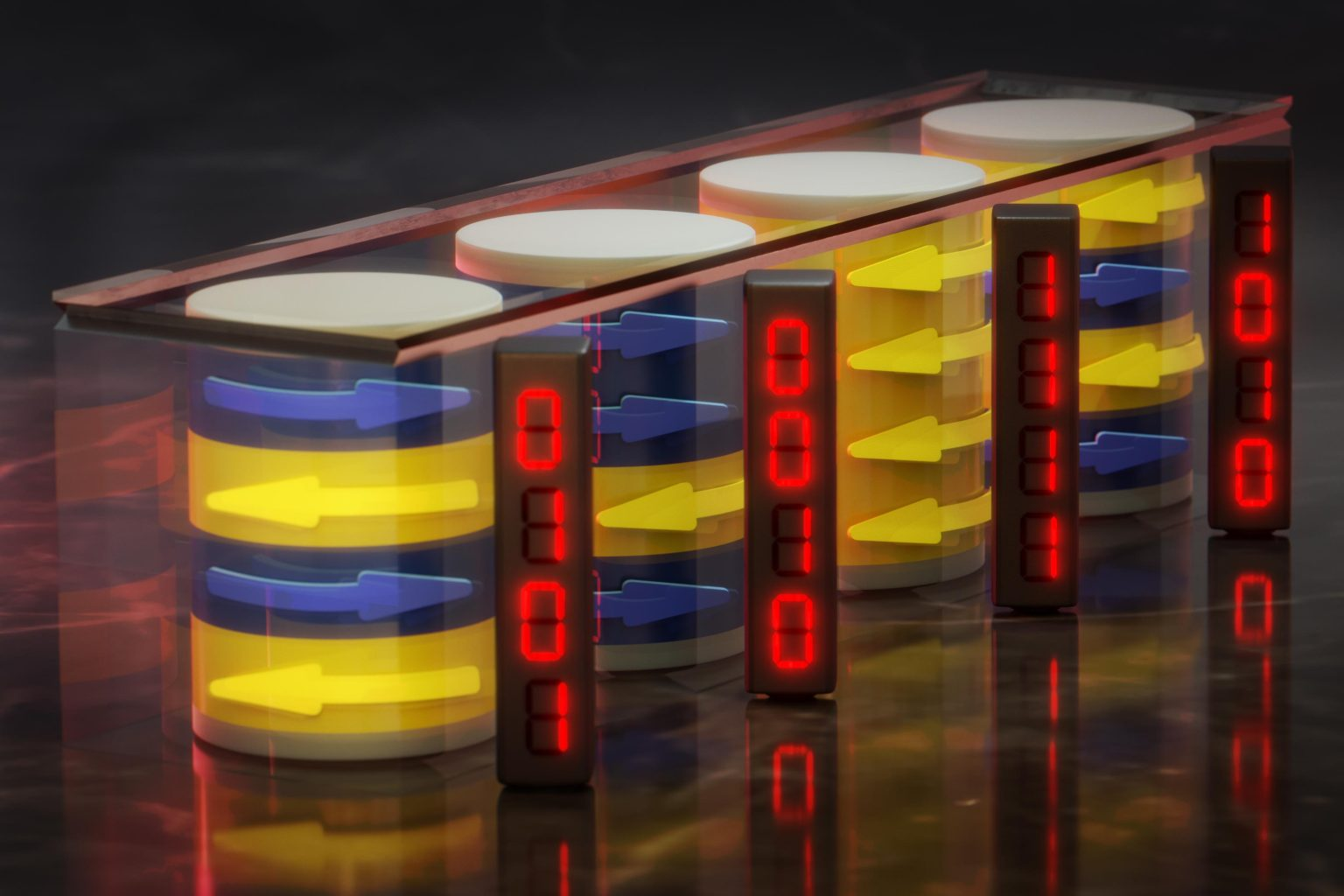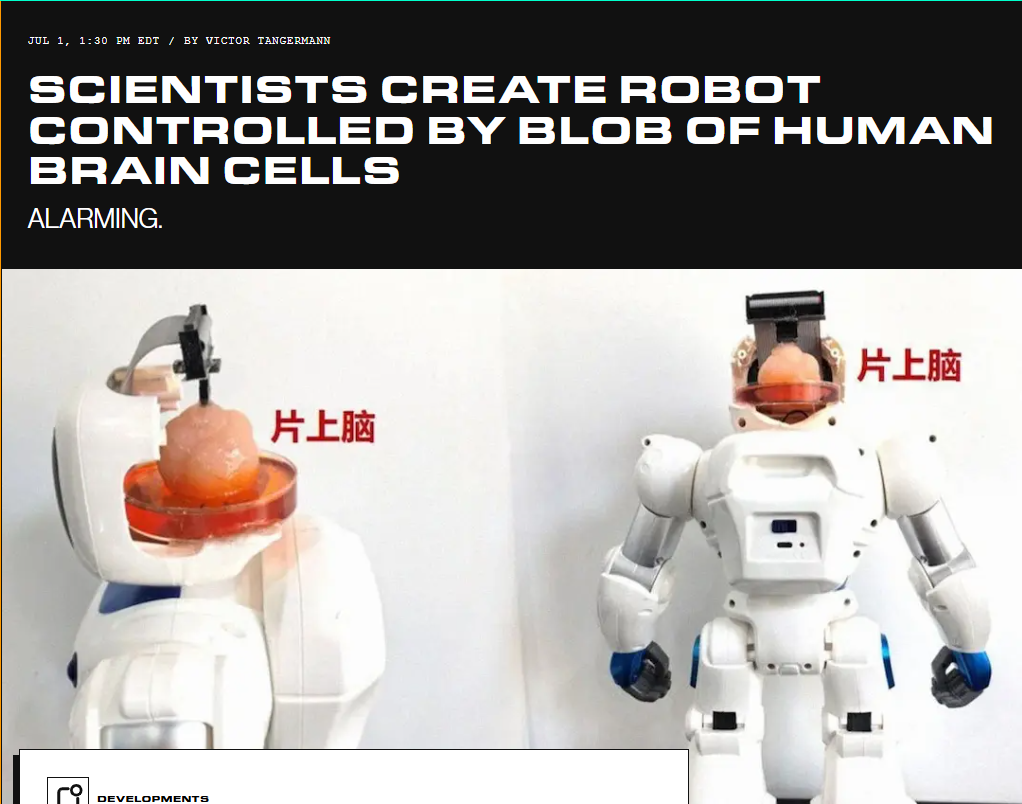"Brookhaven scientists used their new ultrafast pair distribution function (uf-PDF) technique to explore the transition of a quantum material to a previously undiscovered material phase. The above schematic shows how the absorption of a laser photon initiates a small change that propagates through the material over time, rather than instantaneously changing the whole material. Credit: Jack Griffiths/Brookhaven National Laboratory" (ScitechDaily, Atomic ‘GPS’: Quantum Material Transitions Captured in First-Ever Atomic Movies)
In some old models, the quantum computer is two opposite hard disks. There would be the quantum points that the system puts oppositely. Then it shares information between those quantum points or quantum dots. And drives it to the other layer.
New metamaterials and magnetic bubbles are revolutionizing data storage and computing. Before the computer can drive information into qubit, it must store it. In the same way, binary computers must store data before it starts to process information.
"Information is stored by the depth-dependent direction of magnetization in the domain walls, which are located between the cylinder domains and their surroundings. This magnetization of the domain walls can point clockwise or counterclockwise in the individual blocks, which are separated vertically by ruthenium layers. By systematically varying these directions, researchers can encode different bit sequences within a cylinder domain, as is shown here with some artistic interpretation. Credit: HZDR/Bernd Schröder" (ScitechDaily, Revolutionizing Data Storage: How 3D Metamaterials and Tiny Magnetic Bubbles Could Change Everything)
The error correction requires error detection. And in short operations, the computer can simply drive data twice through the system. But in long operations that can take months, the system can use two, or more data lines to make error detection, and the computer must make intermediate recordings for data, that travels in the system.
The atomic GPS makes it possible to locate and manipulate atoms on graphene layers. The system can used to store data into the atoms or their magnetic bubbles. Then the system can start to transport information between atoms. Or, it can transport information between the most out electrons of two atoms. The system must lock those electron's positions, and then it can begin data transportation between them.
The new systems can store information in the atoms in the graphene layer without the need to transport them physically. That makes the system more effective than that system, which should transport every single atom all the time when it transports information to that thing.
In some versions, the system can create towers of magnetic bubbles. Then it can put those towers on the graphene layer. And start to create quantum entanglement between those magnetic fields. The ability to store data in the magnetic bubble makes it possible to transport it as a qubit.
The system can make superposition and entanglement between those bubbles. Or it can shoot those magnetic bubbles through the track to the receiver. The system can also transport information between two bubbles adjusting their size. Information can travel between two identical magnetic bubbles.
When the magnetic bubble transports its information, the system can destroy it after data transportation is done. That makes data transportation more secure.
The new metamaterials allow the system. That looks like neteye. The system can store data into magnetic particles, and hang those particles like atoms into the neteye. Then it can make the quantum entanglement between magnetic particles at both layers. That thing makes it possible to create a fast, multistate quantum system.
The graphene network stabilizes qubits into that network. And then those systems can transport data between two layers. The ability to store data in atoms and their magnetic field makes it possible to create new solutions for binary and quantum computers.
https://scitechdaily.com/atomic-gps-quantum-material-transitions-captured-in-first-ever-atomic-movies/
https://scitechdaily.com/magnetic-qubits-scientists-develop-new-way-to-manipulate-quantum-states/
https://scitechdaily.com/microscopic-building-blocks-new-dual-functional-supramolecular-structures-unveiled/
https://scitechdaily.com/revolutionizing-data-storage-how-3d-metamaterials-and-tiny-magnetic-bubbles-could-change-everything/














